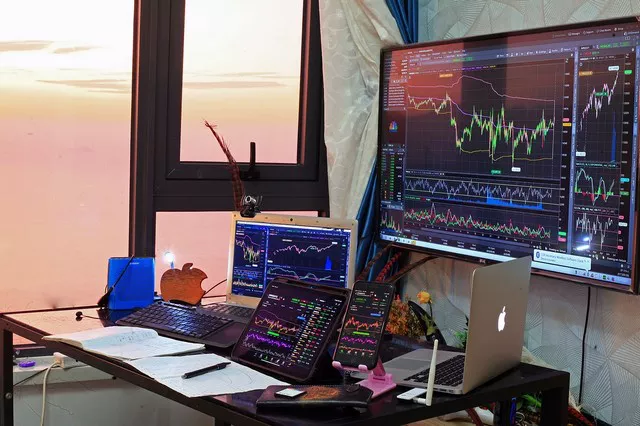In the world of financial markets, NASDAQ and NASDAQ futures are terms that often come into play. However, they represent distinct concepts with different functionalities and purposes.
NASDAQ: The Electronic Stock Exchange
NASDAQ, short for the National Association of Securities Dealers Automated Quotations, is one of the leading electronic stock exchanges globally. Established in 1971, it has grown to become a symbol of innovation and technology in the financial industry. NASDAQ operates as a platform for trading a vast array of equities, including shares of prominent technology companies like Apple, Microsoft, Amazon, and Google. Investors can buy and sell these stocks in real-time through NASDAQ, making it a key player in global financial markets.
NASDAQ Futures: Derivative Contracts
On the other hand, NASDAQ futures represent a derivative financial instrument that derives its value from the underlying performance of the NASDAQ Composite Index. These futures contracts provide investors and traders with an opportunity to speculate on the future direction of the NASDAQ Composite Index without owning the underlying assets. NASDAQ futures are traded on specialized exchanges and offer various benefits, including flexibility, leverage, and the ability to profit from both rising and falling markets.
Underlying Asset and Market Exposure
One of the primary distinctions between NASDAQ and NASDAQ futures lies in the underlying asset. NASDAQ is an actual stock exchange where investors can trade the shares of publicly listed companies. On the other hand, NASDAQ futures are financial instruments based on the performance of the NASDAQ Composite Index, which comprises a basket of NASDAQ-listed stocks. Trading NASDAQ futures provides investors with exposure to the overall performance of the technology sector and offers a way to hedge against market volatility.
Trading Hours and Accessibility
NASDAQ operates during regular trading hours, typically from 9:30 a.m. to 4:00 p.m. Eastern Time on business days. Investors can execute trades in real-time, allowing them to take advantage of market movements and changing conditions. Conversely, NASDAQ futures trading hours are extended, and contracts can be traded electronically around the clock, providing global accessibility and allowing traders to react to international market events and economic data releases.
Leverage and Margin Requirements
NASDAQ futures offer the advantage of leverage, allowing traders to control a larger position with a smaller amount of capital. To initiate a futures trade, traders are required to deposit an initial margin, which is a fraction of the contract’s total value. While leverage can amplify potential profits, it also increases the exposure to potential losses. NASDAQ futures provide traders with a way to maximize their market exposure while managing risk through proper margin management.
Market Volatility and Risk Mitigation
The stock market, including NASDAQ, can be subject to considerable volatility driven by various factors such as economic indicators, geopolitical events, and corporate earnings reports. NASDAQ futures, on the other hand, enable traders to mitigate the risk associated with individual stock performance by focusing on the broader market trends. This approach can provide a more diversified and balanced portfolio, especially during periods of heightened market uncertainty.
Contract Specifications and Settlement
NASDAQ futures contracts have specific terms and conditions, including contract size, expiration date, and tick size. The expiration date determines the last trading day for the contract, after which it settles. Depending on the contract, settlement can occur through physical delivery of the underlying assets or cash settlement, where the difference between the futures price and the final market price is settled financially.
Investment Objectives and Trading Strategies
Investors with a long-term investment horizon may prefer direct investment in NASDAQ-listed stocks through the stock exchange, aiming to benefit from the growth potential of individual companies. Conversely, traders with a short-term outlook or seeking to hedge their portfolio against market fluctuations may find NASDAQ futures an appealing option. Day traders and speculators often utilize NASDAQ futures to take advantage of short-term price movements in the technology sector.
Regulatory Oversight and Investor Protection
Both NASDAQ and NASDAQ futures are subject to stringent regulatory oversight to ensure fairness, transparency, and investor protection. The U.S. Securities and Exchange Commission (SEC) oversees NASDAQ and other stock exchanges, while the Commodity Futures Trading Commission (CFTC) regulates futures markets. These regulatory bodies play a critical role in maintaining market integrity and safeguarding the interests of market participants.
Conclusion
NASDAQ and NASDAQ futures represent distinct avenues within the financial markets, each offering unique opportunities and benefits to investors and traders. NASDAQ serves as a premier stock exchange, providing direct access to shares of leading technology companies. In contrast, NASDAQ futures act as derivative contracts based on the performance of the NASDAQ Composite Index, offering traders exposure to the broader market trends. Understanding the differences between these two concepts empowers investors to tailor their investment strategies and risk management approaches effectively. As with any investment endeavor, conducting thorough research, seeking professional advice, and maintaining a disciplined approach are essential elements for success in navigating the world of NASDAQ and NASDAQ futures.

